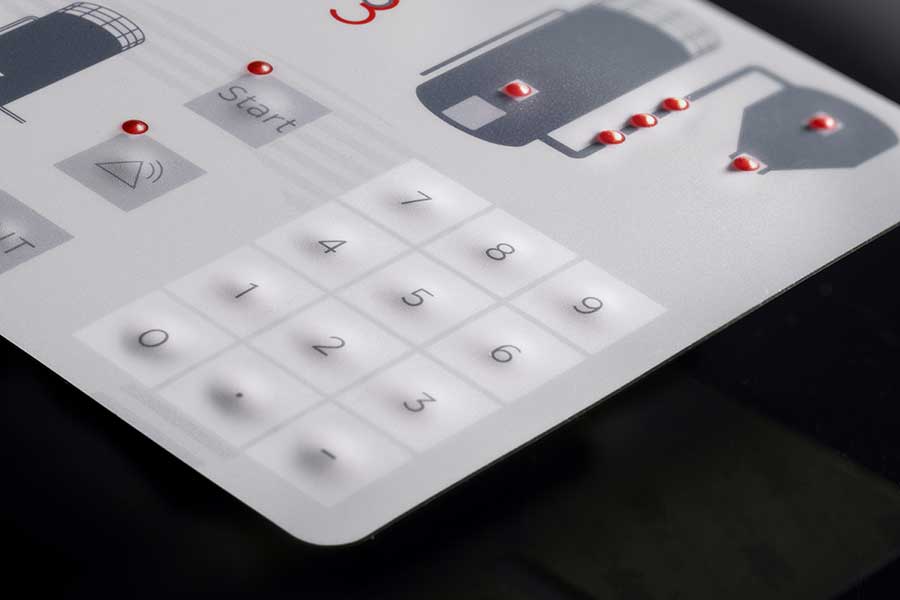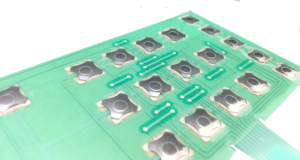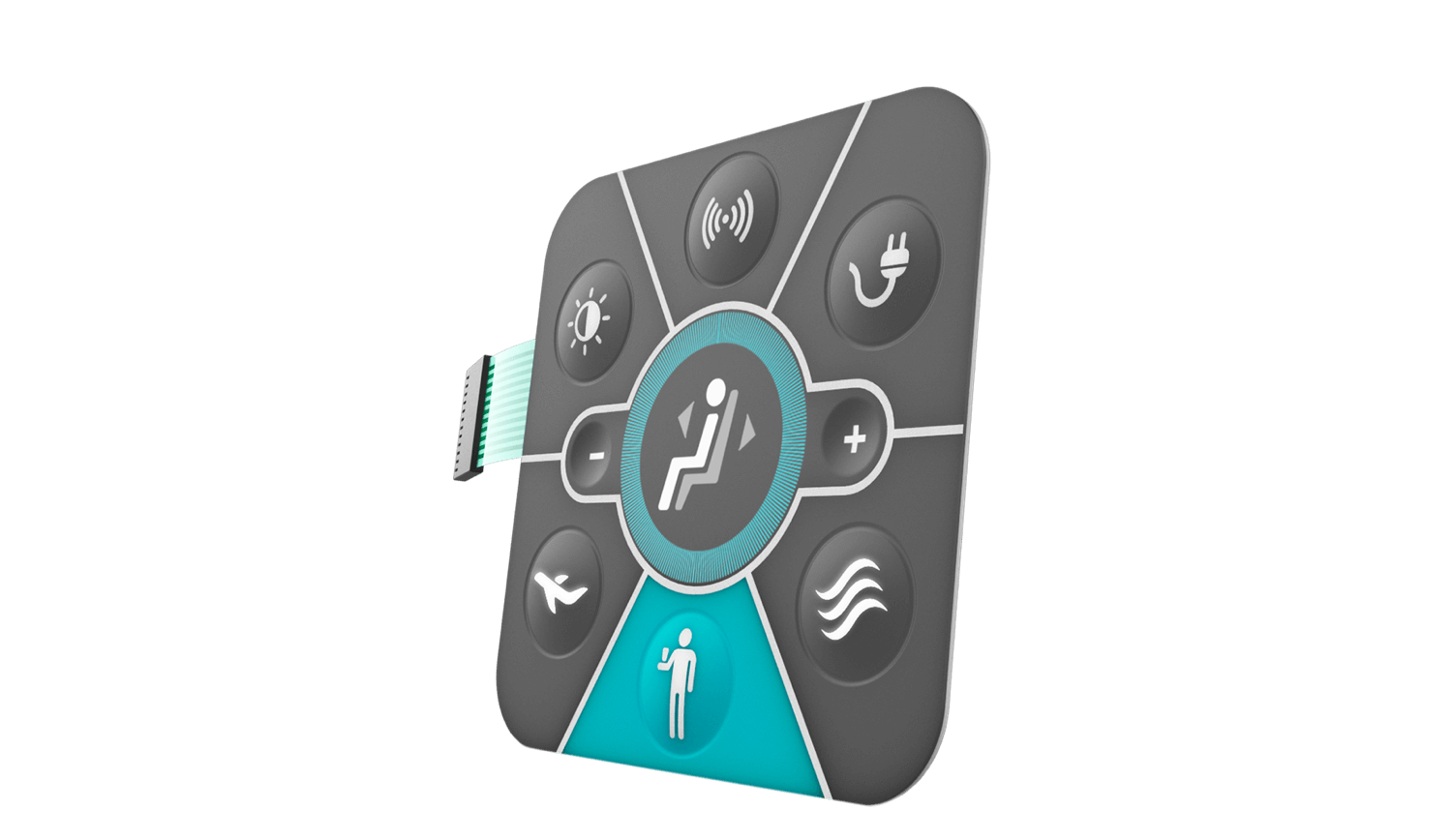The Full Overview to Membrane Switch Modern Technology and Its Applications
Recognizing the Performance of Membrane Switches for Interface Instruments
The capability of membrane layer switches over represents a significant improvement in user interface style, integrating effectiveness with aesthetic versatility. As sectors increasingly focus on customer experience, understanding the nuances of membrane button innovation ends up being necessary.
What Are Membrane Layer Buttons?
Membrane buttons are cutting-edge interface devices that help with individual interaction with electronic tools. These flexible components include numerous layers, consisting of a graphic overlay, spacer, and a printed circuit layer. The design allows for a smooth assimilation right into numerous digital tools, boosting both the visual and useful facets of interface.
Membrane buttons are commonly used in a large array of applications, from household home appliances to commercial equipment and clinical gadgets. Their building commonly features a slim profile, making them an ideal selection for portable styles. The tactile feedback provided by these buttons can be engineered to meet specific customer choices, guaranteeing effective communication between the individual and the device.
Toughness is another substantial benefit of membrane buttons, as they are immune to dust, dampness, and chemicals, which enhances their lifespan sought after atmospheres. In addition, these switches can be tailored in terms of form, size, and visuals style, permitting branding and user-specific features. Generally, membrane changes represent a practical option for boosting individual experience in digital devices, integrating performance with visual appeal in a reliable manner.
Exactly How Membrane Layer Switches Work
Operating on an uncomplicated concept, membrane layer switches over make use of a layered building and construction to register user input successfully. Each switch contains numerous layers, including a published circuit layer, a spacer layer, and a top graphic layer, which are developed to collaborate seamlessly. When an individual presses the top layer, it presses the spacer layer, bringing the conductive aspects of the circuit layer right into contact with each other.
This call produces a closed circuit, indicating the gadget to implement a particular feature. The layout permits various configurations, including tactile responses, which can boost the customer experience by providing a physical sensation upon activation. The materials used in membrane layer buttons usually include flexible substrates, such as polyester or polycarbonate, which guarantee sturdiness and durability against wear and tear.

Secret Benefits of Membrane Layer Buttons

One more significant benefit is their compactness. Membrane switches are slim and light-weight, which makes it possible for producers to save area in their devices without compromising capability. This function is specifically useful in applications where weight and volume are essential considerations.
Furthermore, membrane layer switches are immune to dust, wetness, and chemicals, enhancing their durability. This strength extends their lifespan and minimizes the demand for frequent substitutes, leading to cost financial savings over time.
In addition, the tactile comments given by membrane switches can be enhanced to boost user interaction. They can include functions such as increased switches or distinct clicks, boosting functionality and user experience.
Applications Throughout Industries
Interface tools making use of membrane switches are prevalent in a vast range of markets, showcasing their adaptability and functionality. Membrane Switch. In the clinical industry, membrane layer switches are integral to tools such as analysis devices and individual surveillance systems, where their durability and simplicity of cleaning are vital for keeping health criteria. In the vehicle sector, these buttons are utilized in control panel controls and infotainment systems, providing a sleek and modern-day interface for customers.
In addition, site the customer electronic devices field gain from membrane layer buttons in home appliances and handheld devices, where compact design and user-friendly user interfaces boost individual experience. Industrial applications also take advantage of membrane switches for control board in machinery and automation systems, stressing their effectiveness and resistance to extreme settings.
In the aerospace and protection industries, membrane layer buttons are used in cabin controls and devices, where integrity and efficiency under extreme problems are my link critical. Furthermore, the gaming sector increasingly incorporates membrane layer switches in controllers and gallery machines, adding to an appealing user experience. On the whole, the versatility of membrane switches allows their extensive use throughout various fields, highlighting their significance in modern-day customer interface style.
Future Trends in Membrane Layer Switch Over Innovation

In addition, using sophisticated products, such as polycarbonate and polyester films, is expected to increase, supplying boosted sturdiness and resistance to ecological stress factors. These materials add to the overall longevity of membrane switches, making them ideal for harsher industrial applications.
Furthermore, the unification of smart modern technology, consisting of IoT connection, will certainly make it possible for membrane layer buttons to connect with other devices and systems, helping with a more interactive individual experience. This pattern lines up with the growing demand for wise gadgets throughout various markets, from health care to consumer electronics.
Lastly, customization options are expected to increase, allowing producers to produce bespoke options customized to certain individual needs and preferences. These growths will certainly position membrane switches as essential parts in the advancement of interface innovation.
Conclusion
In conclusion, membrane changes represent a pivotal innovation in customer interface innovation, using a trusted and versatile solution for diverse digital applications. Their split building helps with compact layout, while features such as tactile visit this website feedback boost customer communication. The resilience against ecological variables better strengthens their energy throughout numerous industries. As improvements in material scientific research and touch picking up technologies proceed, the capability and applicability of membrane layer buttons are expected to expand, enhancing their importance in modern digital devices.